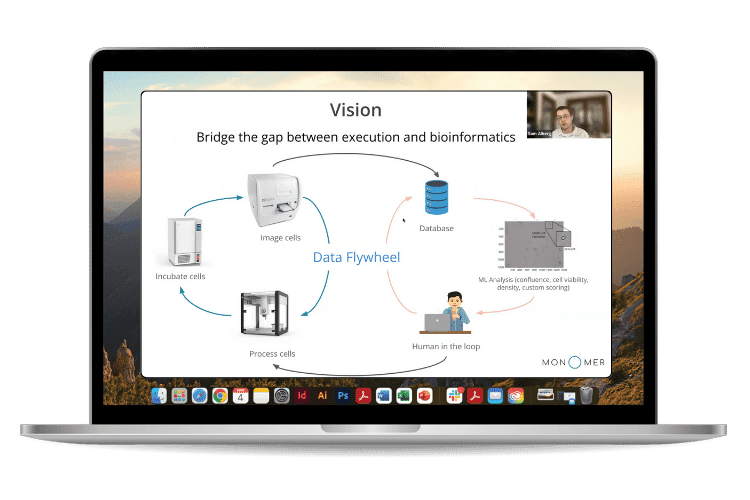
Cell splitting, also known as passaging or subculturing, is a technique used in cell culture to transfer growing cells to new vessels or add fresh media to prevent overcrowding, nutrient depletion, and waste accumulation. As cells proliferate in culture, they use up nutrients and release metabolic waste, which can become toxic. Regular splitting is essential for maintaining cells in their optimal growth phase and preventing the buildup of mutations, especially in long-term cultures. By splitting cells, researchers can extend the viability of their cultures.
Automating cell splitting is becoming increasingly important in cell biology as labs seek to streamline cell culture workflows and improve reproducibility. Traditionally, the process of passaging cells—essential to maintaining healthy cultures—is labor-intensive, manual, and prone to error, which can limit the efficiency and scalability of cell-based research. Automation enables labs to conduct high-throughput cell culture tasks with increased consistency and precision, ultimately accelerating advancements in cell biology and related fields.
Automation in cell splitting also addresses bottlenecks that impede progress in areas such as drug discovery, stem cell research, and regenerative medicine. With tools that automate the splitting process, labs can more easily maintain optimal cell health, culture density, and experimental conditions, all at a fraction of the time and cost required by manual methods. This shift is essential for making high-throughput cell culture more accessible, enabling small and large labs alike to carry out large-scale, iterative research and drive innovation in cell biology.
Opentrons Flex can streamline the cell splitting process by automating critical steps such as media exchanges, cell detachment, and resuspension. With the Flex’s precise liquid handling capabilities, users can perform consistent splitting ratios while reducing contamination risks by operating under a HEPA-filtered environment.
Automating cell splitting with Opentrons not only improves reproducibility but also reduces manual handling, making high-throughput cell culture workflows faster, safer, and more reliable.

The Monomer Bio team will discuss methodologies for building fully-automated cell culture workcells leveraging the OT-2 in conjunction with other off-the-shelf instrumentation and the Monomer software platform. We will review hardware configuration strategies, execution of multi-day, continuous culture protocols, and general best practices for automated cell culture.
Cell splitting is foundational across various research and experimental workflows:
Cell splitting is challenging due to the precise care required to maintain cell health and experimental reproducibility. Factors include maintaining sterile conditions, ensuring correct splitting ratios, and balancing cell density. The main challenges of cell splitting with manual pipetting include:
The OT-2 is a bench-top liquid handler designed to be accessible and flexible enough to automate many common applications.
Our team of experts can help figure out if automation is right for you. Book a virtual demo to discuss your workflow needs with an expert.